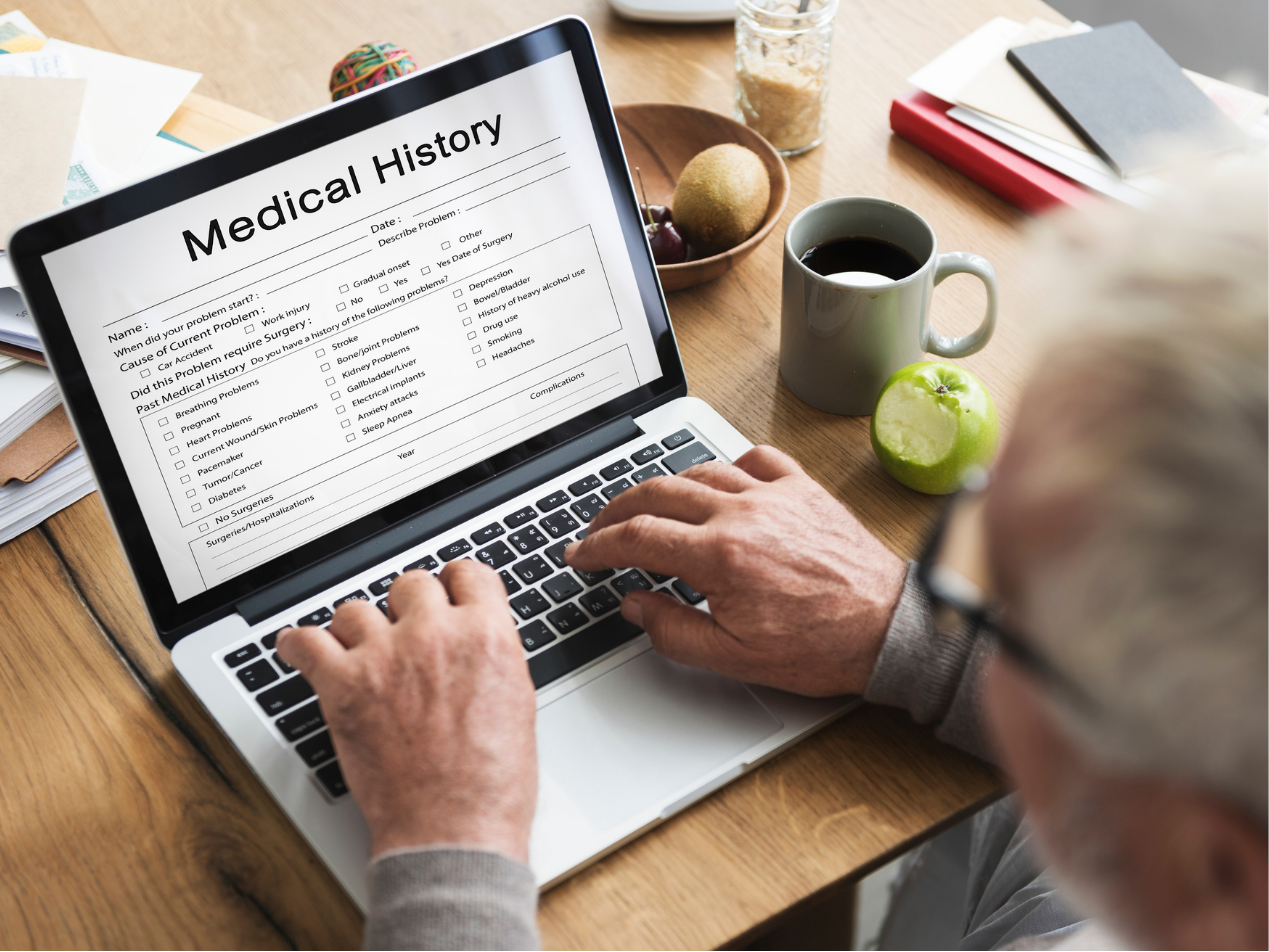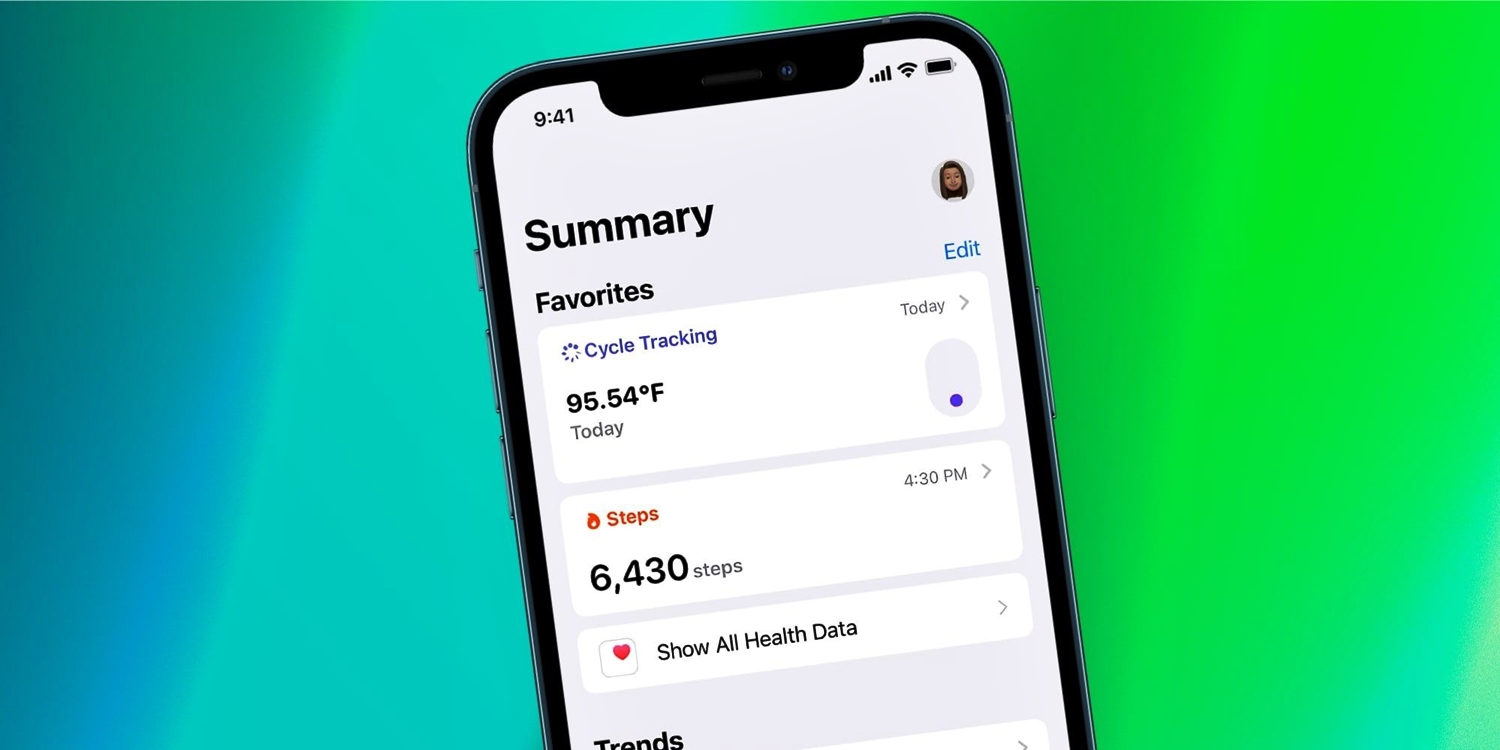

Featured
What Is A Personal Health Record
Modified: January 2, 2024
Discover the benefits of a featured Personal Health Record (PHR) and take control of your health information. Keep track of medical records, prescriptions, and more, all in one secure place.
Introduction
Welcome to the world of personal health records! In this fast-paced digital age, where information is readily available at our fingertips, the concept of personal health records has gained significant traction.
Personal health records, also known as PHRs, are digital or paper-based repositories that allow individuals to store, manage, and access their medical and health-related information. Gone are the days of sifting through stacks of paper files or trying to remember past diagnoses and medication histories. With a PHR, individuals can have all their health information in one centralized and easily accessible location.
The purpose of a personal health record is to empower individuals to take control of their healthcare and make informed decisions. By having a comprehensive view of their medical history, individuals can actively participate in their healthcare journey, collaborate effectively with healthcare providers, and improve overall health outcomes.
Personal health records offer a plethora of benefits that can revolutionize the way we manage our health. In the following sections, we will explore the advantages of PHRs, the different types available, the essential components of a PHR, as well as the steps to create and maintain one. We will also delve into the privacy and security considerations surrounding PHRs, how they integrate with healthcare systems, the challenges and limitations they pose, and finally, what the future holds for personal health records.
Definition and Purpose of Personal Health Records
A personal health record (PHR) is a collection of an individual’s healthcare information that is stored and managed by the individual themselves. It can include a variety of data such as medical history, diagnoses, medications, allergies, immunizations, lab results, and even lifestyle information. PHRs can be stored in different formats, including electronic platforms, mobile apps, or physical documents.
The primary purpose of a PHR is to provide individuals with a comprehensive and accessible repository of their health information. It allows for the consolidation of disparate medical records from various healthcare providers into one centralized location. This not only enables individuals to have a consolidated view of their health history but also facilitates better coordination and communication between healthcare providers.
PHRs empower individuals to take an active role in managing their health and healthcare decisions. They enable individuals to track and monitor their own health progress, set health goals, and make informed choices about their treatment options. With a PHR, individuals can access their medical history at any time, which is particularly useful when visiting new healthcare providers or in emergency situations where immediate access to critical health information is necessary.
In addition to individual benefits, PHRs also have the potential to improve the overall efficiency and quality of healthcare delivery. By providing accurate and up-to-date health information, PHRs reduce the risk of medical errors, duplicate testing, and unnecessary procedures. They also facilitate better communication and collaboration between patients and healthcare providers, leading to more personalized and patient-centered care.
Overall, the purpose of a personal health record is to empower individuals to take control of their healthcare, facilitate informed decision-making, improve care coordination, and ultimately enhance health outcomes.
Benefits of Personal Health Records
Personal health records (PHRs) offer a wide range of benefits that can positively impact individuals’ healthcare experiences. Let’s explore some of these advantages:
- Comprehensive access to health information: With a PHR, individuals have a centralized location for storing all their health-related information. This includes medical history, lab results, medication lists, allergies, and immunization records. Having this information readily available allows individuals to provide accurate and up-to-date information to healthcare providers, ensuring better care coordination and decision-making.
- Better care coordination: PHRs facilitate improved communication and collaboration between patients and healthcare providers. When individuals have access to their health records, they can easily share them with different healthcare professionals, eliminating the need for redundant tests, procedures, and paperwork. This streamlines care delivery and reduces the risk of medical errors.
- Enhanced patient engagement: By having a PHR, individuals can actively participate in their healthcare journey. They can track their health progress, set health goals, and monitor their treatment plans. This engagement empowers individuals to make informed decisions about their health and improve health outcomes.
- Improved safety and efficiency: PHRs reduce the risk of medication errors and adverse drug interactions by allowing individuals to keep an accurate record of their medications, dosages, and schedules. Healthcare providers can access this information to ensure safe prescribing and avoid potential conflicts between medications.
- Emergency preparedness: In emergency situations where immediate access to critical health information is crucial, PHRs can be lifesaving. Emergency responders can quickly retrieve an individual’s medical history, allergies, or pre-existing conditions, enabling them to provide appropriate and timely care.
- Empowerment for chronic disease management: For individuals with chronic diseases, PHRs are invaluable tools. They allow them to closely monitor their condition, track symptoms and triggers, and share vital information with healthcare providers. This proactive management approach can lead to better disease control, improved quality of life, and reduced healthcare costs.
- Privacy and control: Unlike traditional medical records that may be scattered across different healthcare institutions, PHRs give individuals greater control over the privacy and security of their health information. Individuals can choose whom to share their information with, ensuring their data remains confidential.
These benefits demonstrate how PHRs can significantly enhance healthcare experiences, promote patient-centered care, and improve health outcomes for individuals. As the uptake of PHRs continues to grow, more individuals can reap these advantages and actively participate in their own healthcare journey.
Types of Personal Health Records
Personal health records (PHRs) come in various types, each offering unique features and functionalities. Let’s explore the different types of PHRs:
- Stand-Alone PHRs: Stand-alone PHRs are typically consumer-controlled and managed. They are independent of any specific healthcare provider or healthcare system. Individuals can create and maintain these PHRs using various platforms, such as mobile apps or online portals. Stand-alone PHRs provide individuals with full control over their health information and allow for flexible customization based on personal needs and preferences.
- Tethered PHRs: Tethered PHRs are connected to a specific healthcare provider’s electronic health record (EHR) system. The health information in these PHRs is directly linked to the provider’s system and accessed through a patient portal. Tethered PHRs offer individuals access to their medical records, test results, and appointment schedules within the specific healthcare system they are associated with. While these PHRs provide convenience, they may not provide a comprehensive view of an individual’s health information if it is not integrated with other healthcare providers.
- Integrated PHRs: Integrated PHRs aim to address the limitation of tethered PHRs by consolidating health information from multiple healthcare providers and systems into one unified platform. These PHRs enable individuals to have a comprehensive view of their health history, regardless of the different systems involved. Integrated PHRs often rely on health information exchange (HIE) networks to securely gather and consolidate data from various sources.
- Portable PHRs: Portable PHRs are designed to provide individuals with complete control over their health information, allowing them to easily share it with healthcare providers as needed. Portable PHRs operate on a USB drive, mobile device, or other portable storage mediums. These PHRs can be carried by individuals wherever they go and are particularly useful when seeking care from different healthcare providers or in emergency situations where immediate access to health information is vital.
- Cloud-based PHRs: Cloud-based PHRs store health information on remote servers accessed via the internet. These PHRs offer individuals the convenience of accessing their health records anytime, anywhere, using any device with an internet connection. Cloud-based PHRs typically employ secure encryption measures to safeguard privacy and security.
It’s worth noting that some PHRs may combine features of multiple types, offering hybrid functionality. The choice of PHR type depends on individual preferences, the level of integration required with healthcare providers, and the desired accessibility and control over health information.
Regardless of the type chosen, the ultimate goal of any PHR is to empower individuals to actively manage their health, improve care coordination, and facilitate better communication with healthcare providers.
Components of a Personal Health Record
A personal health record (PHR) is made up of various components that collectively provide a comprehensive view of an individual’s health and medical history. These components include:
- Demographic Information: This includes basic personal details such as name, date of birth, gender, contact information, and emergency contact details. Demographic information helps healthcare providers accurately identify and verify an individual’s identity.
- Medical History: The medical history component of a PHR includes information about past illnesses, surgeries, hospitalizations, and major medical events. It provides insights into an individual’s health journey and helps healthcare providers understand the context of their current health status.
- Medication Records: This component of a PHR includes a comprehensive list of medications an individual is currently taking, including the name, dosage, frequency, and prescribing healthcare provider. Medication records support accurate medication management, reduce the risk of adverse drug interactions, and facilitate effective communication with healthcare providers.
- Allergies and Adverse Reactions: This component documents any known allergies or adverse reactions an individual has to medications, foods, or other substances. It helps healthcare providers prevent potential allergic reactions and make informed treatment decisions based on individual sensitivities.
- Immunization Records: This component tracks an individual’s immunizations, including vaccines received and the dates they were administered. Immunization records are essential for ensuring individuals are up to date with recommended vaccinations and help prevent the spread of communicable diseases.
- Laboratory and Test Results: This component includes a record of laboratory tests, diagnostic imaging results, and other medical test results. Having access to these results allows individuals and healthcare providers to monitor health conditions, track progress, and make informed decisions about further treatment or interventions.
- Insurance Information: This component includes details about an individual’s health insurance coverage, including insurance provider, policy number, and contact information. Insurance information is vital for coordinating healthcare services, processing claims, and ensuring appropriate coverage.
- Advanced Directives and Living Will: This component includes any advanced directives or living wills that outline an individual’s preferences for medical treatment or end-of-life care. Advanced directives provide guidance to healthcare providers and loved ones in making decisions consistent with an individual’s values and wishes.
- Wellness and Lifestyle Information: This component captures lifestyle habits, such as exercise routines, dietary preferences, and smoking or alcohol consumption history. It helps healthcare providers understand an individual’s overall health practices and can inform discussions about preventive care and health promotion.
These components work together to provide a comprehensive picture of an individual’s health. By having access to these various components within a PHR, individuals can actively engage in their healthcare decision-making, improve care coordination, and enhance health outcomes.
How to Create and Maintain a Personal Health Record
Creating and maintaining a personal health record (PHR) is a proactive step towards taking control of your healthcare. Follow these steps to create and effectively maintain your PHR:
- Gather Existing Health Information: Start by compiling your existing health information, including medical records, test results, medication lists, immunization records, and allergy information. Contact healthcare providers, insurance companies, and pharmacies to request any missing documents.
- Choose a PHR Format: Decide on the type of PHR that suits your needs. This could be a stand-alone digital platform, a tethered PHR connected to a specific healthcare provider, an integrated PHR that consolidates data from multiple sources, or a portable PHR stored on a USB drive or mobile device.
- Select a PHR Tool: Research and choose a PHR tool or platform that aligns with your preferences. Consider factors such as ease of use, compatibility with your devices, security measures, and the specific features it offers.
- Enter and Organize Information: Start entering your health information into the PHR tool. Organize the information in a logical manner, such as by category or chronological order, to ensure easy accessibility and understanding.
- Maintain and Update Regularly: Regularly update your PHR with new information, including any changes to medications, allergies, or test results. Set reminders to review and update your PHR at least once a year or whenever there are significant changes in your health status.
- Secure and Protect Your PHR: Ensure the security and privacy of your PHR by using strong passwords, encrypting your data, and regularly backing up your information. Only share your PHR with healthcare providers or trusted individuals when necessary.
- Communicate with Healthcare Providers: Inform your healthcare providers about your PHR and its existence. Share relevant information from your PHR with them during appointments or when seeking new medical care. This promotes better communication and collaboration with your healthcare team.
- Regularly Review and Advocate for Yourself: Take an active role in reviewing your health information, understanding your test results, treatment plans, and medications. Use your PHR as a tool to ask questions, seek second opinions, and advocate for your own healthcare needs.
- Ensure Emergency Access: Make sure your PHR is easily accessible in emergency situations. Consider carrying information cards, wearing medical alert bracelets, or storing your PHR on password-protected mobile devices that emergency responders can access.
Remember, creating and maintaining a PHR is an ongoing process. Regularly updating your information and engaging with healthcare providers will ensure that your PHR remains current and relevant, empowering you to make informed decisions about your health.
Privacy and Security Considerations for Personal Health Records
Personal health records (PHRs) contain sensitive and private information, making it crucial to prioritize privacy and security when creating and maintaining a PHR. Here are some important considerations to keep in mind:
- Data Encryption: Ensure that your PHR platform or tool uses strong encryption methods to protect your information. Encryption converts data into a coded form, making it unreadable to unauthorized individuals. Look for platforms that use industry-standard encryption protocols to safeguard your data.
- Secure Access Controls: Choose a PHR tool that provides robust access controls. This includes features such as strong passwords, two-factor authentication, and session timeout settings. These measures help prevent unauthorized access to your PHR.
- Data Backup: Regularly backup your PHR data to prevent data loss or corruption. Use secure and reliable backup methods, such as cloud storage or offline backups, to ensure that your information is protected even in the event of device failure or data breaches.
- Privacy Policies: Familiarize yourself with the privacy policies of the PHR platform or tool you choose. Ensure that the platform respects your privacy rights and clearly outlines how your data will be used, stored, and shared.
- Controlled Sharing of Information: Exercise caution when sharing your PHR information. Only share your PHR with trusted healthcare providers or individuals involved in your care. Understand the sharing capabilities of your PHR tool and configure sharing settings according to your preferences and needs.
- Review Access Logs: Regularly review the access logs of your PHR to ensure that only authorized individuals are accessing your information. This can help identify any unusual activity and potential security breaches.
- Stay Up to Date with Security Updates: Keep your PHR platform or tool updated with the latest security patches and software upgrades. Security updates often contain important fixes and enhancements that address vulnerabilities and protect against emerging threats.
- Regularly Review and Audit Your PHR: Periodically review your PHR to ensure accuracy and relevance of the information stored. Remove outdated or unnecessary information and verify that all entries are up to date. This helps maintain the integrity and reliability of your PHR.
- Secure Physical Storage: If you choose to keep a physical PHR, such as a USB drive or paper-based record, store it in a secure location, such as a locked drawer or a safe. Take precautions to protect it from loss, theft, or unauthorized access.
- Be Mindful of Third-Party Apps and Integrations: If you choose to use third-party apps or integrate your PHR with other platforms, thoroughly vet the security measures in place. Ensure that these apps or platforms adhere to strong security standards and protect your data appropriately.
By following these privacy and security considerations, you can take proactive steps to safeguard your personal health information and maintain the confidentiality of your PHR.
Integration of Personal Health Records with Healthcare Systems
The integration of personal health records (PHRs) with healthcare systems is a crucial step toward improving care coordination and enhancing the patient experience. Here are some key considerations regarding the integration of PHRs with healthcare systems:
- Electronic Health Record (EHR) Integration: Integrating PHRs with electronic health record (EHR) systems allows for seamless exchange of health information between patients and healthcare providers. This integration enables healthcare professionals to access up-to-date patient information, reducing the risk of medical errors and improving care continuity.
- Health Information Exchange (HIE) Networks: HIE networks facilitate the secure sharing of health information among different healthcare organizations and systems, including PHRs. Integration with HIE networks enables PHRs to gather and consolidate data from multiple sources, providing a comprehensive view of an individual’s health history.
- Interoperability Standards: Standardized protocols and data formats play a crucial role in PHR integration. Adhering to interoperability standards ensures seamless communication and information exchange between different healthcare systems and PHRs. Common standards, such as Fast Healthcare Interoperability Resources (FHIR), facilitate the secure and efficient exchange of health data.
- Two-Way Data Flow: PHR integration should support a two-way data flow, allowing individuals to contribute information to their record, such as self-reported symptoms, home monitoring data, or wellness activities. This bidirectional flow of data enables a more comprehensive and accurate view of an individual’s health status.
- Real-Time Data Updates: Integration should support real-time data updates, ensuring that the PHR reflects the most recent health information available. This helps healthcare providers access the most up-to-date information when delivering care and ensures that individuals have the latest insights into their health status.
- Consent Management: PHR integration should provide mechanisms for individuals to control the sharing and retrieval of their health information. Consent management tools allow individuals to specify who can access their PHR and under what circumstances, ensuring privacy and maintaining patient autonomy.
- Secure Data Transmission: Integration should prioritize the secure transmission of health information between healthcare systems and PHRs. Encryption technologies, secure authentication mechanisms, and robust network security measures are essential in safeguarding the privacy and confidentiality of sensitive health data.
- Healthcare Provider Education and Adoption: Successful integration requires healthcare providers to be educated about the benefits of PHRs and the integration process. Training programs and incentives can encourage healthcare professionals to embrace PHRs and effectively utilize them within their practice.
- Usability and User Experience: PHRs should be designed with a user-centered approach, prioritizing ease of use, intuitive navigation, and clear presentation of health information. User-friendly PHRs encourage adoption and engagement, enabling individuals to actively utilize their PHRs for better health management.
By integrating PHRs with healthcare systems, individuals can enjoy improved care coordination, access to accurate information, and enhanced collaboration with healthcare providers, ultimately leading to better health outcomes.
Challenges and Limitations of Personal Health Records
While personal health records (PHRs) offer numerous benefits, they also come with certain challenges and limitations. It is important to be aware of these factors when utilizing PHRs:
- Privacy and Security Concerns: The privacy and security of sensitive health information stored in PHRs can be a significant concern. Data breaches, unauthorized access, and potential misuse of information are risks that must be addressed with robust security measures and adherence to privacy regulations.
- Data Accuracy and Reliability: The accuracy and reliability of the information contained within a PHR depend on the source of the data and the individual’s diligence in updating it. Inaccurate or incomplete information can hinder the effectiveness of PHRs in supporting healthcare decision-making.
- Data Integration Challenges: Integrating PHRs with diverse healthcare systems and providers can be complex due to variations in data formats, interoperability standards, and differing technical infrastructures. Achieving seamless data exchange and integration remains a challenge in some healthcare settings.
- Technological Barriers: Not all individuals have equal access to technological resources or the digital skills needed to effectively use PHRs. This digital divide can limit the adoption and usability of PHRs, particularly among older adults, low-income populations, and those with limited internet connectivity.
- Provider Adoption and Integration: The adoption and integration of PHRs into healthcare provider practices can be challenging. Resistance from healthcare professionals, lack of interoperability between PHRs and electronic health record (EHR) systems, and concerns about added administrative burden can hinder PHR adoption in healthcare settings.
- Standardization and Interoperability: The lack of standardized formats, interoperability standards, and consistent data exchange protocols poses difficulties in consolidating and sharing information across different PHR platforms and healthcare systems. This can limit the ability to achieve a comprehensive view of an individual’s health history.
- User Engagement and Adoption: Engaging individuals and promoting broad adoption of PHRs can be challenging. Limited awareness, lack of incentives, difficulties in data entry, and low perceived value can hinder individuals from actively utilizing and maintaining their PHRs.
- Legal and Ethical Considerations: There are legal and ethical considerations surrounding PHRs, such as consent management, data ownership, and data sharing agreements. Balancing individual autonomy, privacy rights, and the need for data sharing in healthcare can be complex and requires careful attention.
- Data Governance: Establishing clear guidelines for data governance, including data ownership, data stewardship, and data retention policies, is essential in maintaining the integrity and transparency of PHRs. Ensuring that individuals feel in control of their data and understand their rights is crucial.
Despite these challenges and limitations, continued advancements in technology, policy, and healthcare practices aim to address these issues and enhance the functionality and acceptance of PHRs as valuable tools for improving healthcare delivery and patient engagement.
Future of Personal Health Records
The future of personal health records (PHRs) holds great promise for revolutionizing healthcare delivery and empowering individuals to take control of their own health. Here are some key trends and developments shaping the future of PHRs:
- Interoperability and Integration: Efforts to establish standardized data formats, interoperability standards, and seamless integration of PHRs with healthcare systems will continue to drive the future of PHRs. By enabling PHRs to seamlessly exchange data with electronic health record (EHR) systems and other healthcare platforms, individuals and healthcare providers will have access to a comprehensive and up-to-date view of health information.
- Artificial Intelligence and Analytics: The integration of artificial intelligence (AI) and advanced analytics into PHR platforms has the potential to revolutionize personalized medicine. AI algorithms can help analyze vast amounts of data from PHRs and provide insights and recommendations for healthcare management, preventive care, and more accurate diagnoses.
- Remote Monitoring and Wearable Technology: The rise of remote monitoring devices and wearable technology has facilitated real-time monitoring of health parameters. This data can be seamlessly integrated into PHRs, enabling individuals and healthcare providers to track and analyze health trends, monitor chronic conditions, and improve care management.
- Blockchain Technology: Blockchain technology offers a decentralized and secure method for storing and sharing health information. Its immutability, privacy, and data sharing capabilities hold great potential for enhancing the security, interoperability, and consent management of PHRs.
- Enhanced User Experience and Engagement: Future PHR platforms will focus on improving user experience through intuitive interfaces, mobile applications, and personalized health insights. Increasingly engaging and interactive features will encourage individuals to actively participate in their healthcare journey and maintain their PHRs regularly.
- Population Health Management: PHRs will play a vital role in population health management by aggregating and analyzing data from a large number of individuals. This data can be utilized to identify health trends, monitor disease outbreaks, and develop targeted interventions for population-level health improvements.
- Data Interoperability with Consumer Devices: As the Internet of Things (IoT) continues to expand, PHRs will integrate with various consumer devices, such as smartwatches, fitness trackers, and home health monitoring devices. This integration will enable the seamless flow of health data from multiple sources into PHRs, providing a holistic view of an individual’s health and well-being.
- Increased Empowerment and Patient Advocacy: The future of PHRs will empower individuals to become active participants, decision-makers, and advocates in their own healthcare. By providing individuals with comprehensive access to their health information and educational resources, PHRs will facilitate shared decision-making, collaboration with healthcare providers, and improved health outcomes.
The future of PHRs holds immense potential to revolutionize healthcare delivery, enhance patient engagement, and improve health outcomes. As technology continues to advance and healthcare systems embrace PHRs, individuals will have a central role in managing their health, making informed decisions, and participating actively in their healthcare journey.
Conclusion
Personal health records (PHRs) have emerged as powerful tools that empower individuals to take control of their healthcare journey. By providing a centralized and accessible repository of health information, PHRs enhance care coordination, improve patient engagement, and promote better health outcomes.
Throughout this article, we have explored the definition and purpose of PHRs, the benefits they offer, the different types available, and the essential components they encompass. We have also discussed how to create and maintain a PHR, privacy and security considerations, integration with healthcare systems, and the challenges and limitations faced by PHRs. Looking towards the future, we have highlighted trends such as interoperability, AI integration, remote monitoring, blockchain technology, and enhanced user experience that will shape the evolution of PHRs.
As the healthcare landscape continues to evolve, PHRs will play a crucial role in empowering individuals to actively participate in their healthcare decisions, improve care coordination, and enhance overall health outcomes. With careful attention to privacy and security, increased adoption and integration with healthcare systems, and ongoing advancements in technology, PHRs have the potential to transform the healthcare experience for individuals worldwide.
By embracing personal health records, individuals can take charge of their health, collaborate effectively with healthcare providers, make informed decisions, and ultimately lead healthier and more fulfilling lives.






